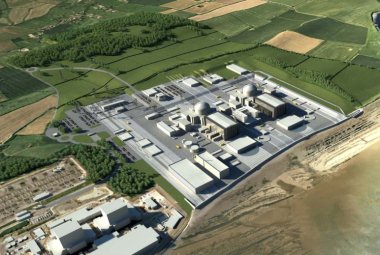UK regulators continue to anticipate issuing interim approvals by the end of the year, according to the latest quarterly report on the progress of the UK's Generic Design Assessment (GDA) for the AP1000 and UK EPR reactors.
 |
| Futuregazing: Hinkley Point C |
The GDA process allows the generic safety, security and environmental aspects of new nuclear reactor designs to be assessed before applications are made for licences and permits to build the reactor on a particular site. As the GDA only needs to be undertaken once for each design, it should speed up the subsequent site-licensing and consents process, together with providing more certainty to investors at an earlier stage.
The newly published quarterly progress report covering the period to 30 September notes that the only resolution plans that are still to be agreed are those needed to address issues from the nuclear accident at the Fukushima Daiichi plant in Japan earlier this year. The recent publication of UK chief nuclear inspector Mike Weightman's final report on Fukushima means that the companies should now be able to make progress on developing those plans, the ONR and EA say. If the two agencies find those plans to be "credible", they will consider providing an interim Design Acceptance Confirmation (DAC) and interim Statement of Design Acceptability (SoDA) for each design. "We expect to be in a position to do this by the end of 2011," the latest report states.
For each design, an interim DAC would be issued by the ONR and would reference a full suite of technical assessment reports published at the same time. The interim SoDA would be published by the EA and would reference a full suite of final assessment reports, also published in parallel.
No nuclear island safety-related construction work can begin until the GDA process is completed and a final DAC and SoDA is issued. Once the ONR has completed its technical assessment reports and the interim DAC and SoDA decisions have been made, the remaining work on the GDA for the two designs will be carried out in two streams progressing at different paces.
Westinghouse has requested a pause in the GDA process for the AP1000 once the interim DAC and SoDA have been issued, and has signalled that it will not proceed to address GDA issues until it is able to secure funding for the work. However, EDF and Areva are working to execute their resolution plans "without delay" and have committed to provide sufficient evidence to secure the full certificates, the ONR and EA note. After the interim DAC and SoDA are issued, the two agencies will focus fully on the close-out phase for the UK EPR. The GDA process had cost both applicants in the region of £24.5 million ($39.3 million) in regulatory charges to the end of June 2011.
The UK EPR and AP1000 are two of four designs originally submitted for GDA in 2007. Atomic Energy of Canada Ltd (AECL) withdrew its ACR-1000 reactor from the process in 2008, and later that year GE-Hitachi Nuclear Energy requested a temporary suspension of the assessment of its ESBWR, despite initial assessments which found no shortfalls for any of designs. EDF has plans to build EPRs in the UK at Hinkley Point C and at Sizewell C, and submitted a site licence application for Hinkley Point C in July.
Researched and written
by World Nuclear News




_18570.jpg)
_18938.jpg)
_33584.jpg)
_82983.jpg)





